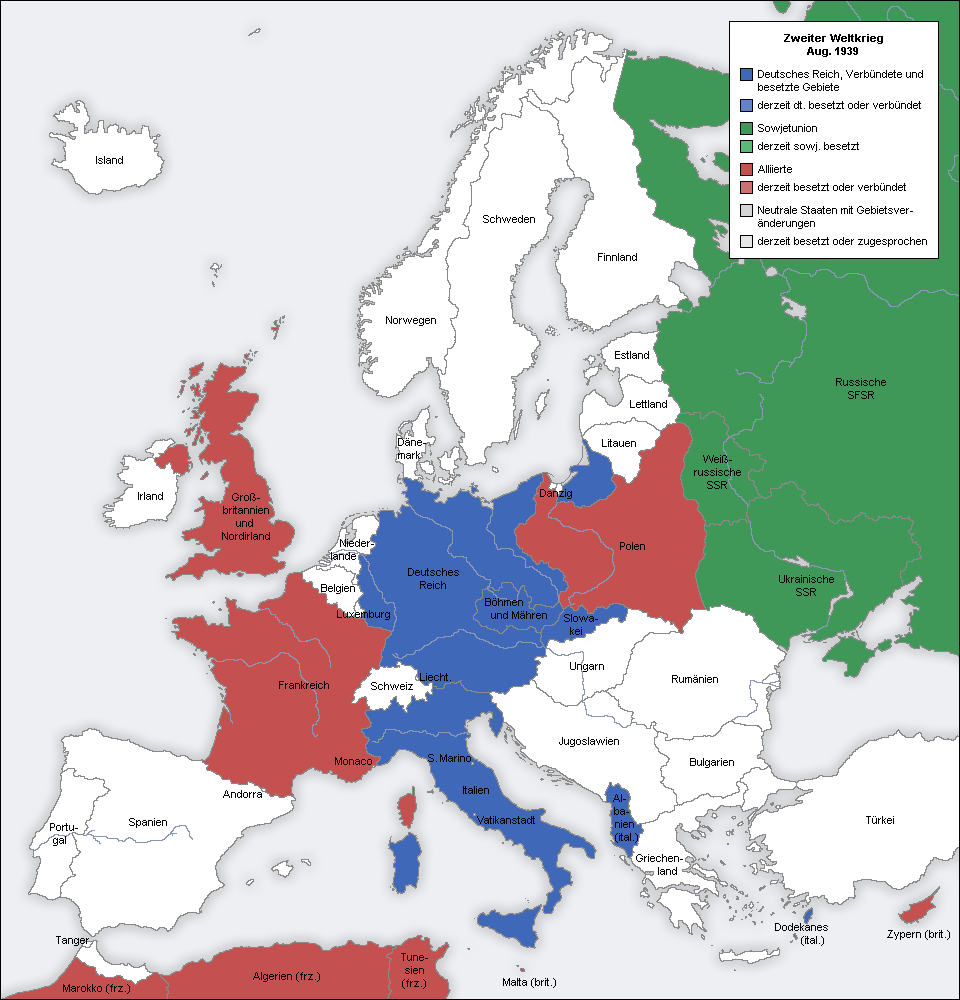Russia is divided into 85 states or oblasts. One of these is Kaliningrad Oblast. Its population of just under 1 million people occupy 15,000 square kilometres (5,791 square miles) of land, which is equal to the size of Timor Leste / East Timor. Kaliningrad is strangely located 300km west of mainland Russia, resting beside Lithuania, Poland and the Baltic sea. At first glance this anomaly is puzzling. Why does Russia own this patch of land? Shouldn’t it be part of a neighbouring country?
The short answer is: Germany was forced to give up huge patches of its conquered land at the end of WWII. In 1945 the Potsdam Agreement was signed by the USSR (now Russia), Britain and the USA. It specifically gave Kaliningrad (known as the German Königsberg at the time) to Russia, without opposition. That’s because Russia had already invaded and taken the area from Germany a few months earlier. Plus, other surrounding nations were too broke to rebuild the area… that already had Russian people.
But why did Russia want it? Well, we’re going to need the longer answer for that one.
How Country Borders Change
World War II (WWII) was fought between 1 September 1939 – 2 September 1945. Germany was a key antagonist in the war after invading western and eastern Europe, systematically killing millions of people. Germany’s Nazi party took control of countries one by one, reaching the height of its powers in 1942, before its invasion was repelled by the Allied and Soviet army. Wikipedia charts the Germany WWII invasion year by year in the below animated image:
How & Why Kaliningrad was taken
It was during the German retreat in 1945 that Kaliningrad (then Königsberg) was claimed by the Soviets. Previously the territory had been part of East Prussia (not Russia) which was part of the German Empire. The Soviet leader at the time, Joseph Stalin, wanted the German Occupied (East Prussian) territory because:
- It would provide the Soviets with its first ice free port for its Navy and trade.
- It was strategically close to the rest of Europe. Thereby if the Soviets installed a military base, its influence would be more visible, in range and important
- It was a major city close to the USSR. This would make it a perfect location to launch an attack from or to retreat to. By controlling this city, the Soviets felt safer.
Stalin’s army of 1.5 million Soviet troops invaded Kaliningrad territory (then Königsberg) during the bloody East Prussian Offensive between 13 January 1945 to 25 April 1945. The battle saw 25,000 civilians killed. The victorious Soviet Union took control of the city and expelled 2.5 million Germans across the surrounding areas. Those that stayed faced abuse or slavery for the next few years.
A few months later in August 1945, the Potsdam Agreement was signed by the USSR (now Russia), Britain and the USA. It specifically gave Kaliningrad (known as the German Königsberg at the time) to Russia, without opposition.
WW2 ended on 2 September 1945. A year later, Königsberg was renamed Kalingingrad after the Soviet Mikhail Kalinin.
Russia quickly developed Kaliningrad into a closed military zone, which became important during the cold war.
The Fall of the USSR
Prior to 1991, Kaliningrad’s east neighbour – Lithuania, was part of the USSR. The fall of the Soviet Union in 1991 (making USSR now Russia), saw it and 13 other Soviet nations uncouple from the USSR and become Sovereign States. Lithuania’s newfound independence made Kaliningrad a Russian exclave that was no longer joined to Russia.
In 1999 and 2004 respectively, Poland and Lithuania became members of NATO (North Atlantic Treaty Organisation). Lithuania also became a member the EU (European Union) in 2003, with Poland joining in 2004. These actions made it necessary for Poland and Lithuania to further strengthen their borders, making passage difficult for Russia.
And that’s why the section of land known as Kaliningrad Oblast is a lonely exclave of Russia.
Goha and Kamil visited Kaliningrad in mid 2016 from their native Poland. They wrote about visiting Kaliningrad and included some great photos. A big thanks to Google Translate for translating their story to English.


